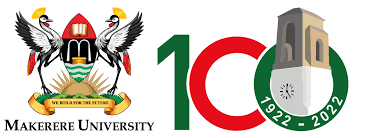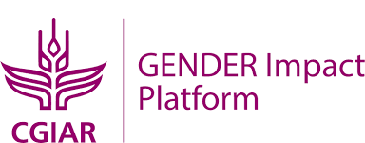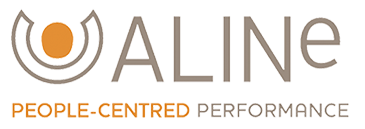By all standards, it was fruitful.
Five technical report outputs, learning, networking, and adventure – all in just 8 days!
In June 2017, members of the implementing team of the GREAT project convened a meeting at Cornell University in Ithaca, New York. The purpose of the meeting was not to discuss the fate of the ousted US FBI director, nor to earn more points on the airways frequent flier account, but to discuss how men and women farmers in sub-Saharan African can benefit equitably from the work of the GREAT project.

GREAT Project Manager Brenda Boonabaana (left),
and Co-PIs Hale Tufan (center) and Margaret Mangheni
(right) discuss during the visit
Of the many meetings I have ever attended, this one was totally unique. It was a mixture of “real technical” work, learning, networking, and adventure. What a combination! The meetings were attended by the Project Management Team members at Cornell and Makerere Universities, trainers, and our partner ALINe – a consulting firm in charge of Monitoring, Learning and Evaluation (MLE) of the GREAT program.
The 8-day-long series of meetings formally began with the MLE sessions on the 5-6th of June. Of course the first few minutes were spent in welcome pleasantries. Guided by Cassidy Travis, a consultant at ALINe, we collectively reviewed and discussed training results and key learnings over the first year of the GREAT program, drew implications for the program and brainstormed the required changes for better results in the subsequent years. We also on reflected on program logic and progress towards key objectives, and reviewed the existing data management systems and how they were functioning for each member of the PMT. What I took home after the 2-day workshop was that GREAT is going to greater heights given its performance in Year 1 as follows:
“Is the training meeting needs and expectations? Fellows reported very high levels of satisfaction with the overall GREAT training. As noted in the report, several fellows referenced that despite attending previous gender trainings, it wasn’t until completing the GREAT course that they fully understood what it means to conduct gender-responsive research. Interestingly, this was expressed by social scientists and biophysical scientists alike. Similarly, all fellows noted that their participation in the course was worth their investment and would like to remain engaged with the course” – Source: GREAT Program Year 1 MLE report
On day 3 (7th June), we had a team retreat facilitated by Melina Draper from the Centre for Teaching Excellence at Cornell, and Marta Maria Guzman Cotto, a psychologist by training. Titled ‘Intercultural Dialogue,’ this session was one of a kind. Firstly, the introduction format was unique: can you imagine the facilitators asking each of the participants to tell a story about their own names? e.g., how why they were named as such, who named them and any other attachments around the names, etc., etc.? We can discuss that another time. From that exercise, I realized that there is more behind the scenes to the names of our colleagues, spouses, clans that we don’t know, which can be discovered when men, women, youth and children take time to ask, listen to one another.
Secondly, before we arrived at Cornell, the facilitators notified each of the participants to take along one item of ‘personal significance’ to be used during the session, and that Interpretation of personal significance was open. This message seemed to have troubled some participants that some wrote back worried of what items would be suitable for the session. When I first read a few lines of the note, the first thought was to take along my nice black and grey, 11-inch HP laptop. I thought of it because it is of personal significance… Yes, it is of personal significance because I spend the most active hours of day with it, but when I saw another line that “…it’s probably best to not bring something highly valuable or irreplaceable,” I quickly tucked away my HP, in fear of losing it, and joined those in worry.
Fast forward to the training day, I still hadn’t figured out what I would present.
As we were standing outside our hotel at Homewood suites waiting for the van to take us to the training venue, two of my colleagues shared about their items of significance. Little did I know that I was the only one who hadn’t taken the note seriously. I didn’t have that item earmarked. To fit in the conversation, I volunteered information that I would present my multiple coloured beaded necklace which gracefully hung on my neck. My item seems to have amused my colleagues, that one asked “..Really? Is a necklace your item of significance?
Without the affirmative nor an explanation, we all burst into laughter, and that made me change my mind.
In the van to the venue, all I was thinking about is that item that I was to present. As luck would have it, the facilitator guided us to pair up and share why the items ‘we’ had come along with were meaningful. This made me feel relieved knowing that it was only one person (my partner) who would see my “personal” item. Due to the odd number of participants in the room, I paired up with one of the facilitators who shared with me her item – a book about the wonders of Puerto Rico, and my role was to listen. Before my turn to share (lie that my necklace was of personal significance), without even looking in my bag (eyes were glued on my partner), I dipped my right hand in the handbag to get a pen for noting down a few points about what she was saying. Guess what I held first…! My black rosary, which saved my day!
Like they say, the rest is history…. I noted that other items brought by my colleagues included a scarf, a bible, bracelets, crafts, to mention but a few! Like the note in the email, the interpretation of personal significance was indeed open. From the exercise, I learnt that active listening is crucial, and as the GREAT team, we learnt that it is always important to respect each individual’s ‘personal’ choices – gauging from the variety of items that the participants came with; and that there are many ways of approaching a problem
Then came a session of visualizing on paper how each participant felt about the entire GREAT program. Equipped with coloured pencils and markers, this exercise put all our drawing skills to test. Most participants started about 3 minutes into the exercise (probably wondering if their drawing skills wouldn’t earn them low marks). Following the expression of their feelings on paper, more so in colour, each participant was asked to explain what they had drawn. Some of the responses included; feeling energised to work and confident to be part of the team, confidence that GREAT will reach the greatest heights; GREAT is a high performing project. Team members need to work hard to deliver high quality service, otherwise can be ‘pruned’; the evolving direction of the project is getting clear – an indication that GREAT will deliver high quality trainings and create high impact in the agricultural systems for men and women farmers.
All in all, all the retreat participants indicated that GREAT had greatly improved, and were confident that it will reach great heights. This half-day session ended with a very high pitch. What I enjoyed most was the facilitation style which was very easy and interesting, and like all other participants, I was yearning for more! From the exercise, the GREAT PMT members were able to know more about one another-from the names to the interests, strengths, hidden skills, e.g., art, feelings, and, fears about the project. Going forward, the team retreat will help the members to overcome fears by sharing, enhancing bonding and working as a team towards the project goal, especially that the next steps are clear. This will increase effectiveness of every individual to cooperate- individually or in teams.
The other half of the day was training on communications. Facilitated by Linda McCandless – a communications specialist at Cornell, and Chris Knight, a videographer from Cornell, both of whom work with the GREAT project – we learned about the principles of communication, crafting messages and communicating to the media. From Linda’s session what stuck in my head was “…always have three talking points in each of your messages” which I am practicing. Chris facilitated a session on communication through video, the dos and don’ts. He used relevant examples such as a video clip of a TV news reporter’s interview gone bad which was so hilarious that we all burst into laughter (unaware that our turn to speak before the camera was next). For the practical session on speaking before a video camera, the videographer and each of the participants role played TV host and guest from GREAT. Regarding the evaluation of each of the participants interviews, most were rated very good (…though a few wish the clips are never published!).
Overall, the communications session was very helpful and equipped the PMT members with communication and public relations skills that will take the project to a higher level. The communications session was followed by an informational and networking event that was open to the public. The event attracted many faculty and students from various colleges at Cornell University, who all showed interest in GREAT activities. To sum it up, it was a well-organized event with adequate space for interaction, which was well utilized, with informative posters, lots of food, soft drinks and wine. The Makerere team ‘rubbed shoulders’ with the Cornell team, exchanged contacts, which showed a good start of a long-lasting partnership to promote gender-responsive agricultural research.
About the author

Elizabeth Asiimwe is an agricultural extension professional and works at Makerere University as the project manager for GREAT.
For press inquiries or for more information, email us at great@cornell.edu.





